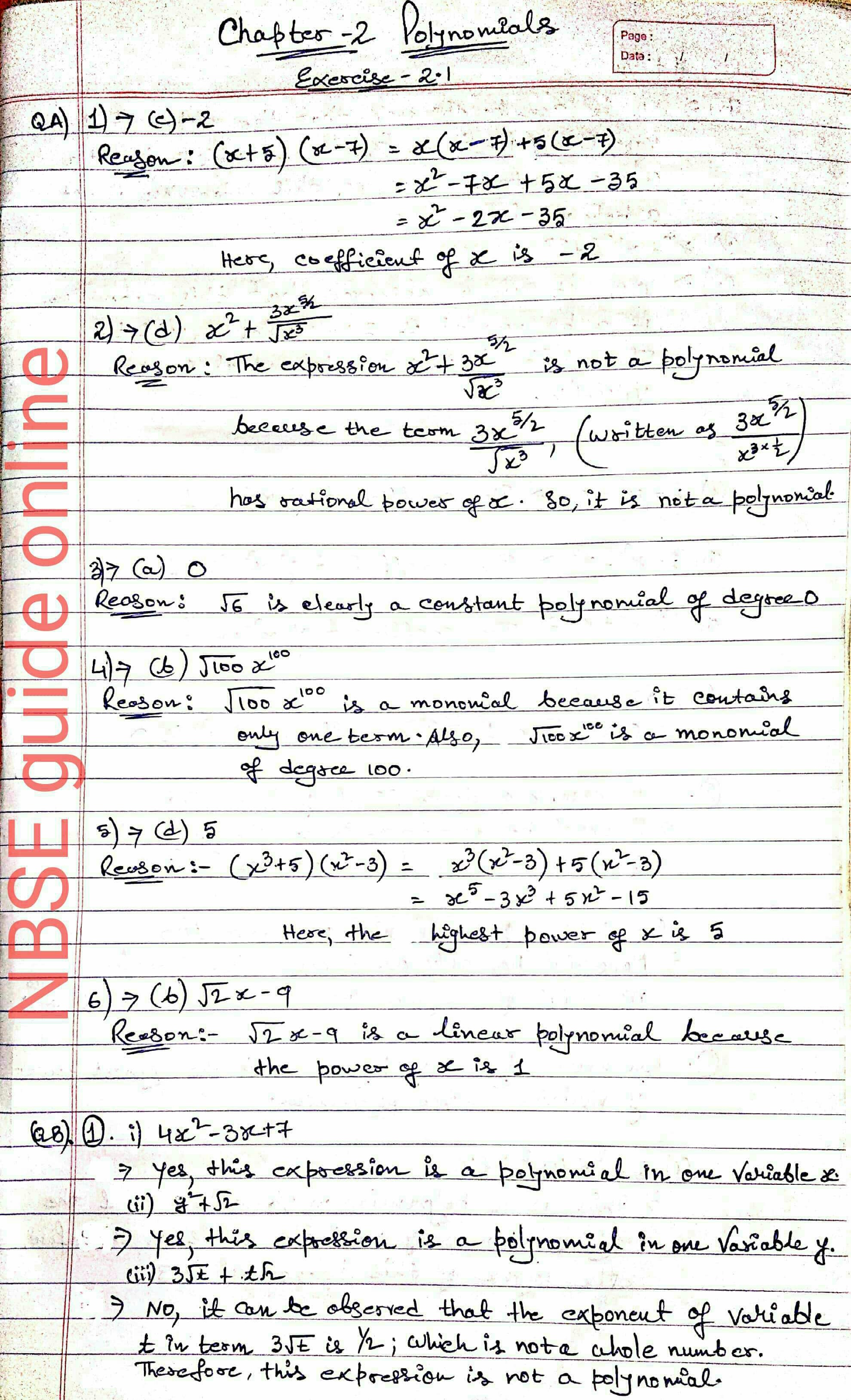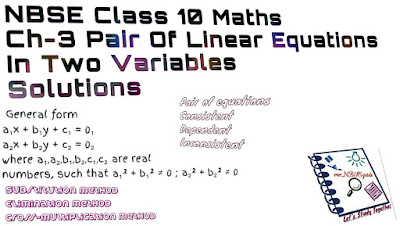Class-9 : Maths - Chapter : 4 Linear Equations In Two Variables (Ex-4.1 Ex-4.2 Ex-4.3 Ex-4.4)
Linear Equations In Two Variables
This chapter will introduce the students to the linear equation in two variables, i.e., ax + by + c = 0. Students will also learn to plot the graph of a linear equation in two variables.
★★★
To download Chapter 4 (Linear Equations In Two Variables) solutions in PDF for future use please click on the link below.
Ex - 4.1 : Download PDF
Ex - 4.2 : Download PDF
Ex - 4.3 : Download PDF
Ex - 4.4 : Download PDF
Note : All the copyright of this PDF content belongs to NBSEguideonline. It is available to all NBSEguideonline users without any subscription.
★★★
Points To Remember
Linear Equations In Two Variables
An equation of the form ax + by + c = 0 where a, b, c are real numbers and x, y are variables, is
called a linear equation in two variables.
Here ‘a’ is called coefficient of x, ‘b’ is called coefficients of y and c is called constant term.
Eg. 6x + 2y + 5 = 0, 5x – 2y + 3 = 0 etc.
Solution Of a Linear Equation
Let ax + by + c = 0 be a given linear equation in x and y.
Then, a pair of values, one for x and one for y, which satisfy the given equation, is called its solution.
If x=α and y=β satisfy the equation ax + by + c = 0 then we can say that the ordered pair (α,β) is its solution.
A Linear Equation In Two Variable Has Infinitely Many Solutions
We can get many many solutions in the following way.
Pick a value of your choice for x (say x = 2) in 2x + 3y = 12. Then the equation reduces to 4+3y = 12, which is a linear equation in one variable. On solving this, you get y = 8/3. So (2, 8/3) is another solution of 2x + 3y = 12. Similarly, choosing x = —5, you find that the equation becomes — 10 + 3y = 12. This gives y =22/3. So, (-5, 22/3) is another solution of 2x + 3y = 12.
So there is no end to different solutions of a linear equation in two variables.
Note : An easy way of getting a solution is to take x = 0 and get the corresponding value of y.
Similarly, we can put y =0 and obtain the corresponding value of x.
Graph Of a Linear Equation In Two Variables
Method of drawing a graph of ax + by + c = 0, a≠0, b≠0
Step 1 : Express y in terms of x
Step 2 : Choose some convenient values of x and find the corresponding values of y satisfying the given equation.
Step 3 : Write down these values of x and y in the form of a table.
Step 4 : Plot the ordered pairs (x,y) from the table on a graph paper.
Step 5 : Join these points by a straight line and extend it in both the directions.
The line is the graph of the equation ax + by + c = 0.
Equation of lines parallel to x-axis and y-axis
• The equation of x-axis is y=0 and the graph is a line parallel to y-axis.
• The equation of y-axis is x=0 and the graph is a line parallel to x-axis.
★★★
NBSE Solutions for Class 9 Maths for all Chapters by NBSE Guide Online are provided here. Just click on the chapter wise links given below :
The solution list comprises all the chapter-wise answers to the questions present in the NBSE book for Class 9 in a very precise and lucid manner, maintaining the objective of text books.
★★★
| Related Links |
| NBSE Class 9 Book-keeping & Accountancy |
| NBSE Class 10 Book-keeping & Accountancy |
| NBSE Class 10 Mathematics Solutions |











Comments
Post a Comment
If you have any doubts please let me know